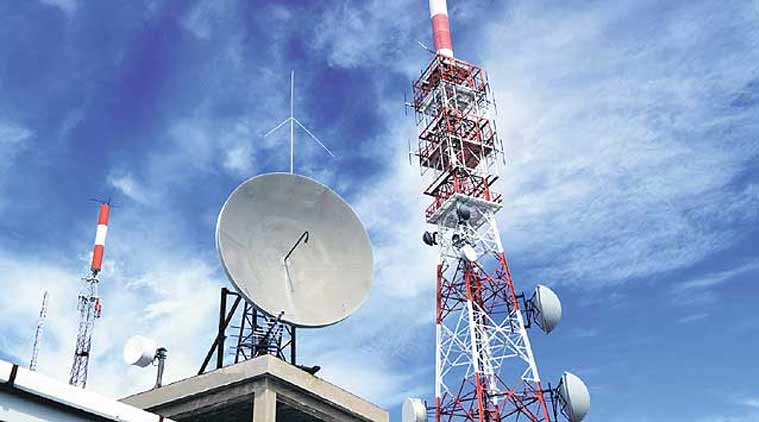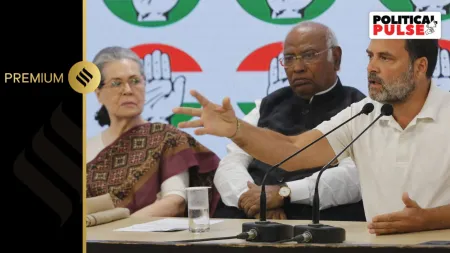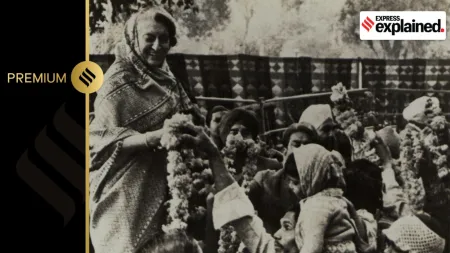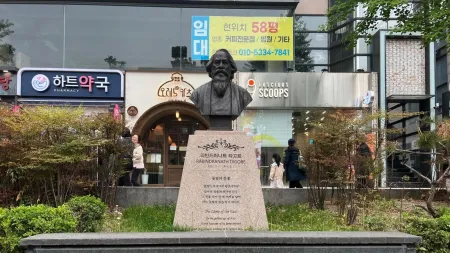- India
- International
Government needs to assist the telecom sector to facilitate a smooth transition to 5G
Unfortunately, the revenue enthusiasm of the private entrants was belied, not least because tariffs for the new services were set at impossibly high levels. The Rs 156 per month rental and Rs 16.80 per peak minute tariffs encouraged subscription but not usage. Revenues did not materialise and besides, the incumbent public sector monopoly made life hard for the private sector entrants.
 Licences are now available on tap — anyone who wishes to offer telecom services can get one. (File)
Licences are now available on tap — anyone who wishes to offer telecom services can get one. (File)
In the years following the liberalisation of the telecom sector in India that began gingerly in 1994, the biggest barrier to private entry was a licence or the right to operate telecom services under the Telegraph Act. Licences were scarce since the government had limited their number in the same manner that licences were controlled pre-1991. So, when India allowed private players in telecom, potential investors showed extraordinary exuberance by committing huge sums of money to obtain a licence. And for several good reasons. Competition was limited to two private operators, telecom services were constrained everywhere in the country, and therefore, there was a huge addressable market.
Unfortunately, the revenue enthusiasm of the private entrants was belied, not least because tariffs for the new services were set at impossibly high levels. The Rs 156 per month rental and Rs 16.80 per peak minute tariffs encouraged subscription but not usage. Revenues did not materialise and besides, the incumbent public sector monopoly made life hard for the private sector entrants.
In 1999, the government took a “brave” decision in favour of the sector. On a collective plea by private operators, the government agreed to reduce their licence fee burden that threatened business continuity. The sector successfully migrated to the revenue-share licence fee regime that continues today. It was a courageous call then that allowed the sector to resurrect itself from the overhang of irrational bidding. The massive growth of telecom that followed vindicated the government’s decision to migrate to a licence fee regime based on a percentage of revenue. Evidence shows that the government too has benefited. Some still take the view that private entrants should have been made to pay what they bid and that they got away.
A similar predicament confronts the sector today. It is in the grip of a severe financial crisis. The migration package has been in place for two decades. Meanwhile, spectrum or airwaves that make services possible, were unbundled from the licence in 2012. This was a significant change in the operating conditions of telecom operators and one that has gone largely unnoticed. Licences are now available on tap — anyone who wishes to offer telecom services can get one. But, there’s a catch. The binding constraint is imposed by the availability of spectrum — without it, the licence is not worth the paper on which it is printed. Thus, the effective barrier to entry is now spectrum and not the licence. How spectrum is assigned will determine the nature and extent of competition in the market, and facilitating it is one of the primary mandates of regulators.
In this backdrop, we find the rules and the reserve prices for the upcoming spectrum auction including radio waves for 5G mobile services issued by TRAI to be incompatible with the goal of facilitating competition and market growth. In brief, the reserve prices are too high, reflect an extractive mindset, ignore the prevailing circumstances within the sector and run the risk of losing money for the government, while indefinitely compromising India’s 5G adoption ability. Luckily, the Department of Telecommunication (DoT) has returned the recommendations to TRAI for reconsideration. We hope that it will. The other positive development is that the new minister has set up a committee under the telecom secretary to review levies on the sector.

This is not a brief for India’s much-vaunted and at the same time vilified telecom sector. It is a recognition that the industry’s debt levels have burgeoned, due in part to the enormous amounts paid for spectrum and other regulatory charges, and in part due to competition from technological disruptions via apps which have put pressure on traditional revenue streams. There are also the sectors’ own indiscretions somewhere along the way, but let’s keep that aside in the larger interest of what’s at stake.
Regulatory bravado would advise that it is an operator problem, and if they bid high or did not anticipate or accommodate technology, they ought to deal with it. And that’s the point of this piece. Give the sector a chance to deal with circumstances, but with a little bit of help. Just like in 1999.
The year 2010 was a watershed moment in the life of Indian telecoms. Until then, spectrum was administratively assigned, and thereafter by auctions. The pre-2010 administrative assignment of spectrum suffered from lack of transparency, favouritism and avoidable scandals. The Supreme Court thus ordered the government to auction spectrum for “all times to come”.
Telecom auctions have unquestionably had their advantages. Usage has become efficient and the government has generated substantial revenue. When combined with other fees such as for licences and spectrum usage charges, the government has collected Rs 4,84,198 crore since 2010-11. This amounts to over 28 per cent of the cumulative non-tax revenue receipts of the government during this period.
But auctions are also risky and the outcomes depend upon its design. The reliance on high reserve prices could be counterproductive and could result in unsold spectrum, delayed services and a permanent loss of revenue for the government. This has happened in the past. Bidder turnout, market conditions and the choice of auctioning agent are all important. We currently follow a simultaneous multi-round ascending auction method, which could be designed to produce high revenue for the government, and the auctioneer (if auctioneer fee is linked to the auction outcome), but at a cost to the sector. If this is done for the upcoming 5G auctions, India could well miss the 5G bus, or even come under it.
If the Supreme Court’s diktat endures for “all times to come”, we must learn to conduct spectrum auctions that balance transparency in allocation and revenue expectations for the government. The combinatorial clock auction is a popular alternative that has been tried elsewhere to reduce risks and improve efficiency. On the other hand, if we could infuse trust in administrative assignment and link spectrum allocation to market development, it can be the elixir the sector needs.
Neither is going to be easy. But when the problem is knotty, so are the solutions. We must recognise that spectrum is the new entry barrier or the manifestation of market power. No operator should be allowed to hoard or capture it. Large amounts need to be assigned on reasonable terms for 5G services to maximise the technology’s potential. And we need to do it concurrently with the rest of the developed telecom markets. Else we will play catch up, like we did for 2G, 3G and 4G. And there will be no next time. The time to act is now. Else Ghalib’s lament, Hum ne maana ki taghaful na karoge lekin, khaaq ho jayenge ham tum ko khabar hote tak, (I know you may not neglect me/ but it may be too late by the time you act) might just ring true.
This article first appeared in the July 4 print edition under the title ‘Spectrum of possibilities’. The writer is director & chief executive, ICRIER. Views are personal
EXPRESS OPINION
More Explained
May 09: Latest News
- 01
- 02
- 03
- 04
- 05








































